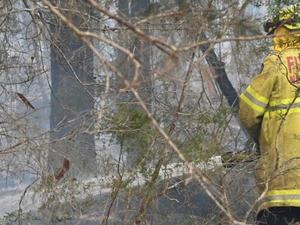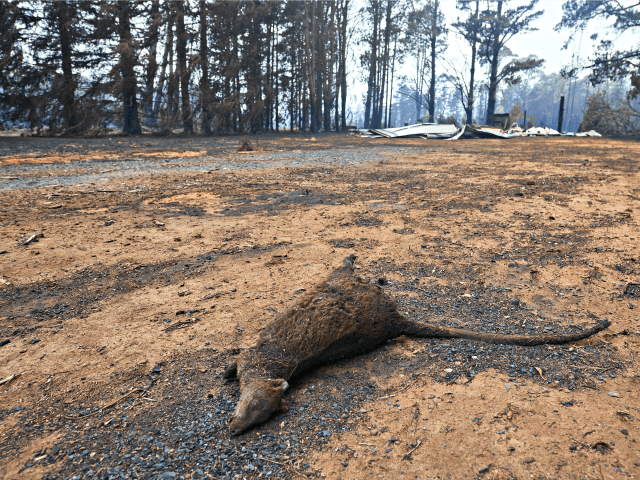The images are enough to melt the hardest hearts: Koalas and kangaroos trying to flee the bushfires that have engulfed large portions of Australia. Videos show carcasses of these and other animals that have perished in the blazes littering the scorched landscape.
While firefighters from around the world are trying to quell the bushfires and save lives — more than 20 people have died — the images of suffering animals, some found only in Australia, have tugged heartstrings and
inspired donations from ordinary citizens and celebrities alike.
CNN
reported on what experts are saying:
Nearly half a billion animals have been impacted by the fires in [North South Wales] NSW alone, with millions potentially dead, according to
ecologists at the University of Sydney. That figure includes birds, reptiles, and mammals, except bats. It also excludes insects and frogs — meaning the true number is likely
much higher.
The total number of animals affected nationwide could be as high as a billion, according to Christopher Dickman, the University of Sydney ecologist who led the report.
CNN reports that fires in Australia are worse because of climate change, even as officials in that country
report that 183 arrests have been made for fire-related charges, including 24 for arson.
“The scale of these fires is unprecedented,” Dieter Hochuli, an environmental sciences professor at the University of Sydney, said in the CNN report. “There are substantial concerns about the capacity of these (ecosystems) to rebound from the fires.”
CNN reported:
The team at the University of Sydney came to their conclusion by using estimates of NSW mammal population density in 2007 in order to estimate how many animals have been affected by the 4.9 million hectares (12.1 million acres) that have been set alight in the state this fire season.
Hochuli said that it will be hard to know an exact number of dead animals until the fires end, but he said it could be higher than half a billion.
“The true loss of animal life is likely to be much higher than 480 million,” a statement from the university
said.
Dickman is
quoted in a Public Radio International (PRI) report as updating the number of dead animals to as many as one billion. He said:
The 480 million estimate was made a couple of weeks ago, and the fires have now burnt over a large area of the further country. That means over 800 million mammals, birds and reptiles have been affected by the fires. Australiawide, it’s probably over a billion. I think there’s nothing quite to compare with the devastation that’s going on over such a large area so quickly. It’s a monstrous event in terms of geography and the number of individual animals affected.
CNN reported:
Koalas and kangaroos are spread out across the country, so they’re not in danger of going extinct due to the blazes. But other animals that live in niche environments and have smaller populations may have been wiped out entirely; these include the eastern bristlebird, the mountain pygmy possum and the corroboree frog.
CNN noted that Australia has more than
300 native species and about 81 percent of those are only found in that country.
The
Guardian Australia reported on some of the other wildlife threatened by the bushfires:
Ecologists have grave concerns for the future of unique and endangered wildlife on Kangaroo Island where bushfires have killed thousands of koalas.
Fires on the island, in South Australia, have so far burned through 155,000 hectares – about one third of the island’s entire area – with blazes concentrated in the biodiversity-rich western areas.
Concerns are greatest for the unique and endangered mouse-like marsupial the Kangaroo Island dunnart, and the glossy black-cockatoo, which have both seen extensive areas of critical habitat burned.
Many people are bringing injured animals to the Kangaroo Island Wildlife Park, according to Sam Mitchell, co-owner of the park.
“At least a third of what has been brought in we’ve had to euthanise unfortunately,” he said. “We are seeing many burns to hands and feet – fingernails melted off. For some the burns are just too extreme.”
“Injured kangaroos, wallabies and pygmy possums had also been brought to the park, which was in the process of setting up larger treatment areas for the injured animals,” the Guardian Australia reported.
Richard Glatz, an entomologist at the University of Adelaide who lives on the island, said he is concerned about the rare green carpenter bee but that it is humans who have been affected by the bushfires that have been on his mind.
“I’m still processing all this,” he said. “In a way I’ve been thinking more about the people – we’ve lost something like 50 houses and for a small community, that’s huge.”


No comments:
Post a Comment